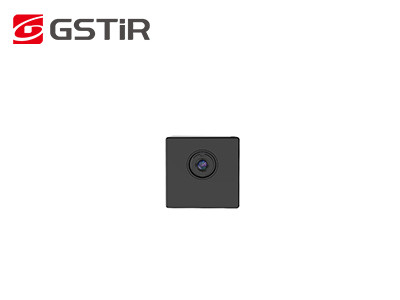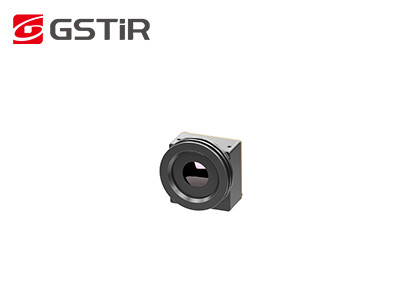보안 카메라를 위한 언쿨레드 장파장 적외선 적외선 카메라 핵심 256x192 12μM + 3.2 밀리미터 렌즈

무료샘플과 쿠폰을 위해 나와 연락하세요.
왓츠앱:0086 18588475571
위챗: 0086 18588475571
스카이프: sales10@aixton.com
만약 당신이 어떠한 관심도 가지면, 우리가 24 시간 온라인 도움말을 제공합니다.
x| 결의안 | 256x192 | 소비 전력 | 700mW |
|---|---|---|---|
| 스펙트럼 범위 | 8~14μm | 화소 피치 | 12μm |
| 넷드 | ≤65mK | 프레임 속도 | 25Hz/30Hz |
| 강조하다 | 비냉각 장파장 적외선 적외선 카메라 핵심,적외선 카메라 핵심 256x192,보안 카메라 장파장 적외선 적외선 핵심 |
||
Uncooled LWIR Infrared Camera Core 256x192 12μm + 3.2mm Lens for Security Camera
iLC212 uncooled IR imaging module integrates the 256x192 / 12μm focal plane array wafer level package (WLP) infrared detector and can capture long-wave infrared (LWIR) spectrum that ranges from 8 to 14μm.
Oriented for fully optimized SWaP-C, the iLC212 thermal camera module is specially designed for those customers who has strict requirements about size, weight and cost in the area of security and surveillance. Due to its miniature size, light weight and very low price, the iLC212 thermal core greatly meets the customers' low price demands, shorten their developement time and save costs for them.
Global Sensor Technology specializes in the design, manufacture, sales and marketing of thermal imaging detectors and infrared modules. We can provide our customers a variety of infrared thermal imaging solutions which shorten secondary development time and greatly reduce the cost for customers.
- Fully optimized SWaP-C application
- Suitable for various security thermal cameras
- A wide range of thermal imaging applications
- Low Power Consumption
| Model | iLC212 |
| IR Detector Performance | |
| Material | Uncooled Vanadium Oxide |
| Resolution | 256×192 |
| Pixel Size | 12μm |
| Spectral Response | 8μm ~14μm |
| NETD | ≤65mK@F1.0@25℃@50Hz |
| Image Processing | |
| Digital Video | RAW/YUV/BT656; Support USB2.0 Video Transmission; Temperature Measurement Support Parameter Line |
| Digital Frame Rate | 25Hz/30Hz |
| Image Display | Black-hot/white-hot/Pseudo-color |
| Image Algorithm | Nonuniformity Correction (NUC) 3D Image Noise Reduction (3DNR) 2D Noise Reduction (DNS) Dynamic Range Compression (DRC) EE Enhancement |
| Start-up Time | ≤3s |
| Temperature Measurement | |
| Operating Temperature Range | -10℃~+50℃ |
| Temperature Measurement Range | -20℃~+150℃, Support Temperature Measurement Range Expansion and Customization |
| Temperature Measurement Accuracy | ±3℃/±3% (take the larger value) @23℃±5℃; the Temperature Measurement Distance is 1.5m |
| Regional Temperature Measurement | Support Any Area Temperature Measurement, Output Area Maximum Value, Minimum Value and Average Value |
| SDK | Windows / Linux Version, Achieve Video Stream Analysis and Gray to Temperature Conversion |
| Electrical Interface | |
| External Interface | 30pin_HRS Connector Power Input Digital Video RS232-TTL/USB2.0 GPIO etc. |
| Communication | RS232-TTL/USB2.0 |
| Expansion Component | VPC Board |
| PC Software | |
| ICC Software | Module Control and Video Display |
| Power System | |
| Power Supply | DC 3.3V±0.1V |
| Power Dissipation | Steady State: 0.70W/3.3V @23±3℃ |
| Physical Property | |
| Connectors | External Connector Model: DF40C-30DP-0.4V (51), (HRS-Male) Mating Connector Model: DF40C (2.0)-30DS-0.4V (51), (HRS-Female) |
| Size | 21mm×21mm×12.8mm (including 3.2mm lens) |
| Weight | 8.9g±0.5g (including 3.2mm lens) |
| Environmental Adaptability | |
| Operation Temperature | -40℃~+70℃ |
| Storage Temperature | -45℃~+85℃ |
| Humidity | 5%~95%, non-condensing |
| Impact & Vibration Resistance | Impact: half sine wave, 40g/11ms, 3-axis, 6-direction Vibration: 5.35grms, 3 axis |
| Certification | ROHS2.0/REACH |
| Lens | |
| Optional Lens | 3.2mm/F1.1, HFOV: 55.6±2.8°; Coating: AR |
The iLC212 thermal imaging module is applied to the field of Security Monitoring, Thermography, Wearable Device, Vehicle Electronics, Smart Home, Living Creatures Detection etc.
![]()
![]()
1. What are the advantages of cooled thermal modules?
Cooled thermal modules offer several advantages, including:
Higher Sensitivity: Cooled modules can detect smaller temperature differences, providing better image quality.
Longer Range: They can capture thermal information over greater distances.
Higher Resolution: Cooled modules typically offer higher pixel counts, resulting in sharper and more detailed images.
Reduced Noise: The cooling process substantially decreases the sensor noise, resulting in clearer images.
Suitable for Advanced Analysis: Cooled modules are often used for scientific research, remote sensing, and specialized applications that require precise temperature measurements and analytics.
2. What are the advantages of uncooled thermal modules?
Uncooled thermal modules have their own set of advantages, including:
Lower Cost: Uncooled modules are generally more affordable than their cooled counterparts.
Compact Size: They are smaller and lighter, making them easier to integrate into various systems.
No Maintenance: Uncooled modules do not require cryogenic cooling systems, simplifying maintenance requirements.
Instant Startup: They can be quickly turned on and produce thermal images without the need for cooling.
Energy Efficiency: Uncooled modules consume less power compared to cooled modules.
3. What are the typical applications of cooled and uncooled thermal modules?
Cooled and uncooled thermal modules find applications in various fields, including:
Cooled Thermal Modules: Long-range surveillance, scientific research, high-resolution imaging etc.
Uncooled Thermal Modules: Personal night vision devices, handheld thermal cameras, automotive safety, building inspections, firefighting, and consumer electronics.
It’s important to note that the specific application and its requirements often dictate the choice between cooled and uncooled thermal modules.
4. Are infrared thermometers accurate for measuring body temperature?
Infrared thermometers (also known as non-contact thermometers) can provide a quick estimation of body temperature. However, their accuracy can be influenced by various factors, such as the distance from the target, external temperature conditions, and the device’s calibration. For medical purposes, it is recommended to use clinical-grade thermometers for precise measurements.






